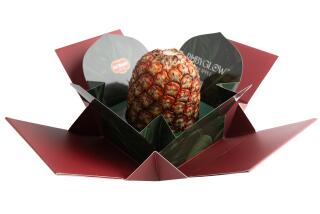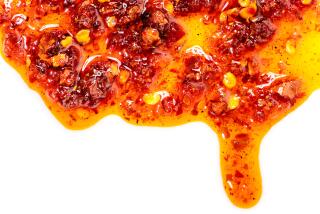What’s in a name? When it comes to fruit, economic and genetic forces have a major say
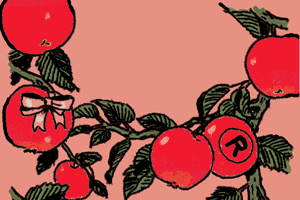
It’s probably happened to you: You’re strolling through the produce section at the supermarket, perhaps underwhelmed with the flavor of the Fuji apples you’ve been getting lately, or finding that the kids aren’t as into the Flame Seedless grapes as they used to be.
Suddenly you come upon a display of a fruit that’s new to you: Cotton Candy® grapes, Cosmic Crisp® apples, mandarins branded as Cuties®. Into the cart they go — a simple choice — though it’s hard to imagine the complex corporate machinery that brought the glossy displays and colorful bags to you, and how they signal a fundamental change in how fruit today is being grown and sold.
The true name of the alluringly aromatic Opal® apples that you’ve just purchased — the name that they were patented under after being bred in the Czech Republic — is “UEB 3264/2.” How pastoral!
One might suspect varieties named this way were genetically modified or somehow monkeyed with, but that’s not so. The dual names reflect a privatization of economic and genetic resources with far-reaching consequences: By splitting fruit nomenclature into inscrutable patent names and consumer-friendly brands — like birth and stage names for actors, or generic and brand names for drugs — breeders and marketers are increasing their ability to profit from their intellectual property, which just happens to be food.
Today more than half of all newly developed fruit varieties have gobbledygook for official names, such as WA 38, Code 3X97 or Burpeachthirtysix.
When I started writing about fruit in the early 1990s, most varieties were open to growers big and small. But heading into 2020, we’re halfway to a scenario where big growers and marketers control the vast majority of the most desirable varieties. The effects visible to the public lag well behind what’s happening in law offices and nurseries, since it takes years for orchards to be planted and start producing.
These seemingly arcane legal and marketing issues affect the price and quality of fruit, and whether it comes from a small local or a distant industrial farm. So it’s not just someone else’s business: Anyone who eats fruit has a stake in this game.
New fruit as intellectual property
Breeding new fruit varieties is essential for farmers to cope with proliferating pests and diseases, foreign competition, climate change and labor shortages. Names are a crucial way for consumers to choose good fruit. Although many varieties have been selected for productivity or shelf life instead of flavor, the best fruit breeders are artists who enrich our lives by developing sweeter blackberries, ultra-crisp apples and intensely flavored grapes.
The late 19th and early 20th centuries were a golden age for these creative fruit breeders, amateur and professional, but they rarely derived much profit because their varieties could be freely reproduced by grafting or cuttings. When Stark Brothers Nursery bought the rights to the Golden Delicious apple variety in 1914 for a whopping $5,000, it enclosed the mother tree in a steel cage to prevent thefts of sticks for grafting — and still the wood got out.
Luther Burbank, the first commercial fruit breeder and a celebrity in his time, single-handedly revolutionized the California plum industry by creating successful, much-beloved varieties such as Santa Rosa, Wickson and Elephant Heart, but for much of his life he scrounged to earn a living.
From 1898 on he campaigned for patent protection for his inventions, but it was only after his death that the federal Plant Patent Act of 1930 gave fruit breeders exclusive rights to sell plants of their discoveries for 17 years (since increased to 20). Breeders began earning income from royalties paid by farmers to nurseries for each plant they bought.
Plant patents, many for ornamental plants like roses, started out as a trickle, averaging just 40 annually in the 1930s. Some of the most important early fruit patents covered chance discoveries by small farmers, such as Rudolph Hass’ namesake avocado, found in La Habra Heights and patented in 1935. There were also many noteworthy individual fruit breeders like Fred Anderson, who launched the modern nectarine industry with his Le Grand variety in 1941.
For much of the 20th century, however, state university and U.S. Department of Agriculture breeding programs were the main sources of new fruit varieties, such as Redhaven peach (Michigan State University, 1940), Rainier cherry (Washington State University, 1960), Star Ruby grapefruit (Texas A & I University, 1970) and Flame Seedless grape (USDA, 1973). The 1950s and ’60s set the high-water mark for such fruit breeding programs, which developed new fruit varieties as a public good and did not charge royalties.
The decline of public breeding
As populations shifted to urban areas and demands on state and federal budgets increased, financial support for these breeding programs dwindled, forcing many to shut down.
Private fruit breeding flourished, and plant patents steadily increased to 1,250 annually in recent years. Many breeders, such as Floyd Zaiger, the creator of Pluots®, make most of their varieties available to the public in return for royalties collected by nurseries; other proprietary programs, such as Driscoll’s® berry breeders, restrict access to their discoveries to growers for one company.
In recent decades, state fruit breeding programs, typically attached to land-grant universities, have become less eager to share breeding material freely; struck deals with private breeders to license potentially valuable material; pursued out-of-state and international licensing; and, in general, acted less like public researchers and more like businesses.
Meanwhile, the state cooperative extension programs that have historically provided essential horticultural advice to farmers have slowly atrophied as a result of public disinvestment.
One important measure, USDA grants for agricultural extension programs, declined 38% in constant dollars, from $263 million in 1993 to $163 million in 2014, said Rick Klemme of the Assn. of Public and Land-grant Universities. Increasingly, farmers who can afford it hire private agricultural consultants, he told me.
The defunding of cooperative extension in California has been especially severe.
“The whole system is broken,” said Ben Faber, a University of California Cooperative Extension farm advisor for Ventura, Santa Barbara and San Luis Obispo counties. “When I was hired in 1990, UCCE had nearly 500 advisors; now we’re down to under 200.”
The genesis and expansion of fruit branding
More than a century ago, large fruit marketers began using brands such as Sunkist® citrus (1907), Calavo® avocados (1926) and Chiquita® bananas (1945), but these generally applied to multiple varieties or fruits. Branding wasn’t just for big corporations: Countless small and midsized farmers advertised their brands on colorful fruit box labels to attract buyers from mom-and-pop groceries when they visited wholesale markets.
The produce world changed radically in the second half of the 20th century as farms got larger, imports poured in, small groceries disappeared and supermarket chains consolidated. All the major players bulked up, and lawyered up, grasping for an edge in the fight for market share and survival.
The trademarking of specific varieties of fruit started with Sugraone grape, sold as Superior Seedless® (1972), but really took off with the Pink Lady® brand of Cripps Pink apple in the 1990s. Anyone could buy Cripps Pink trees by paying tree royalties to a nursery during the patent term, but if they wanted to sell the fruit as Pink Lady® they also had to pay a sales-based licensing fee and meet quality standards, such as sweetness, firmness and color — even after the patent expired. This was the dawn of a new era of fruit marketing: Increasingly complex and expensive, the introduction of a new variety of fruit at a national scale required years of promotion and payments to supermarket chains for product placement.
Privatized marketing spread rapidly in the 2000s with apples such as Jazz® and Opal®. Companies including Biogold, Proprietary Variety Management, Prevar and Next Big Thing formed to seek out promising varieties, acquire rights, sign up growers and shippers, and manage brands, with varying degrees of control over marketing.
Apples led the way, but other fruits followed, including grapes, berries and stone fruit.
Strategies behind the name game
Intentionally unmarketable patent names — like UEB 3264/2 (Opal® apples), WA 38 (Cosmic Crisp® apples) and Code 3X97 (Wonderful Seedless® lemons) — increased from less than 10% of new varieties 20 years ago to roughly half of all new fruits today. The method behind this madness was to make life more difficult for future generic marketers. Legally anyone can use an official name once the patent expires, but if it’s off-puttingly gnarly, for practical purposes a grower couldn’t use it and would have to choose and promote a new brand name that doesn’t sound like a lost string of computer code — or pay royalties to use the established brand name.
The brand names are carefully vetted and sometimes multiple brands are developed for one fruit suited to different purposes, to avoid discovering the hard way that an innocuous-seeming name such as “Petunia” means “Up yours!” in another language.
Promoting a new name is “a challenge both in money and time, and most people won’t do it,” said Lynnell Brandt, president of Proprietary Variety Management, which manages the Pink Lady® brand in the United States and several other apples, including the new, much-ballyhooed Cosmic Crisp®.
A major advantage of brands for breeders, or anyone who holds the rights to a variety, is that they can continue to control the marketing of the variety and earn royalties from fruit sales after their patent expires. That’s smart business, although it’s an end-run around the intention of the Plant Patent Act to make protected varieties publicly available to farmers after their patent terms end.
Sun World International, a pioneer of the controlled licensing of fruit, uses another tactic to profit from varieties after their patents expire: It leases physical grapevines and stone fruit trees to growers, rather than selling them. The company legally controls the trees and vines so that competitors can’t propagate them without stealing.
Sun World’s varieties, like those of many private breeders and developers, are available chiefly to large growers, to whom the company provides technical support and who can afford to only sell the fruit that meets the company’s quality standards.
Many of the dominant growers of some crops have proprietary breeding programs for their own use, or have agreements with top breeders allowing them to scoop up exclusive rights to the most promising varieties. Perhaps the race has always been to the swift, but as privatization accelerates, small and midsized fruit growers are likely to be squeezed — although there will be some winners as well.
Privatization at the farmers market
For Murray Family Farms, which cultivates 300 acres near Bakersfield, the privately controlled Sequoia® cherries (Glenred and other varieties) bred by BQ Genetics have been a game-changer: They’re early-season, low-chill, high-yielding, crack-resistant and great-tasting.
The Murrays have to sell Sequoias® commercially only through the trademark owner, Warmerdam Packing, but the farm signed a contract for the right to sell them at farmers markets, where they’re the only vendor with good cherries the first two weeks of the season, in April.
Murray also offers mind-bogglingly flavorful crosses of Eastern and Western grapes privately bred by International Fruit Genetics, some unsuited for commercial sales but ideal for farmers markets.
Mike Cirone, who grows 27 acres of apples and other fruits in San Luis Obispo County and sells at farmers markets, said that lack of access to desirable varieties isn’t a problem yet. Privatization of fruit varieties has only gained traction for 20 years, so he said there are still plenty of good varieties publicly available.
“But if the trend continues to the most Orwellian scenario, fruit production will be controlled by a few growers who’ll have the patents and the land and water,” he said. “I think I’ll still have a niche, but farmers who need access to wholesale markets will be screwed.”
Gresham’s law and you, the fruit eater
The contemporary commodification of fruit has, generally speaking, led to lower prices, but this isn’t necessarily all good for consumers: In a pomological version of Gresham’s law (“bad money drives out good”), poor quality, cheap fruit, overcropped or sloppily grown, often supplant higher quality but more expensive fruit in a completely open market.
Witness that poster child for specious industrial fruit, the end-stage Red Delicious apple. It started out in 1881 worthy of its name, but decades of “improved” redder mutations and market-share knife fights led to the mealy, tasteless caricature that remains one of the most widely sold apples in America today.
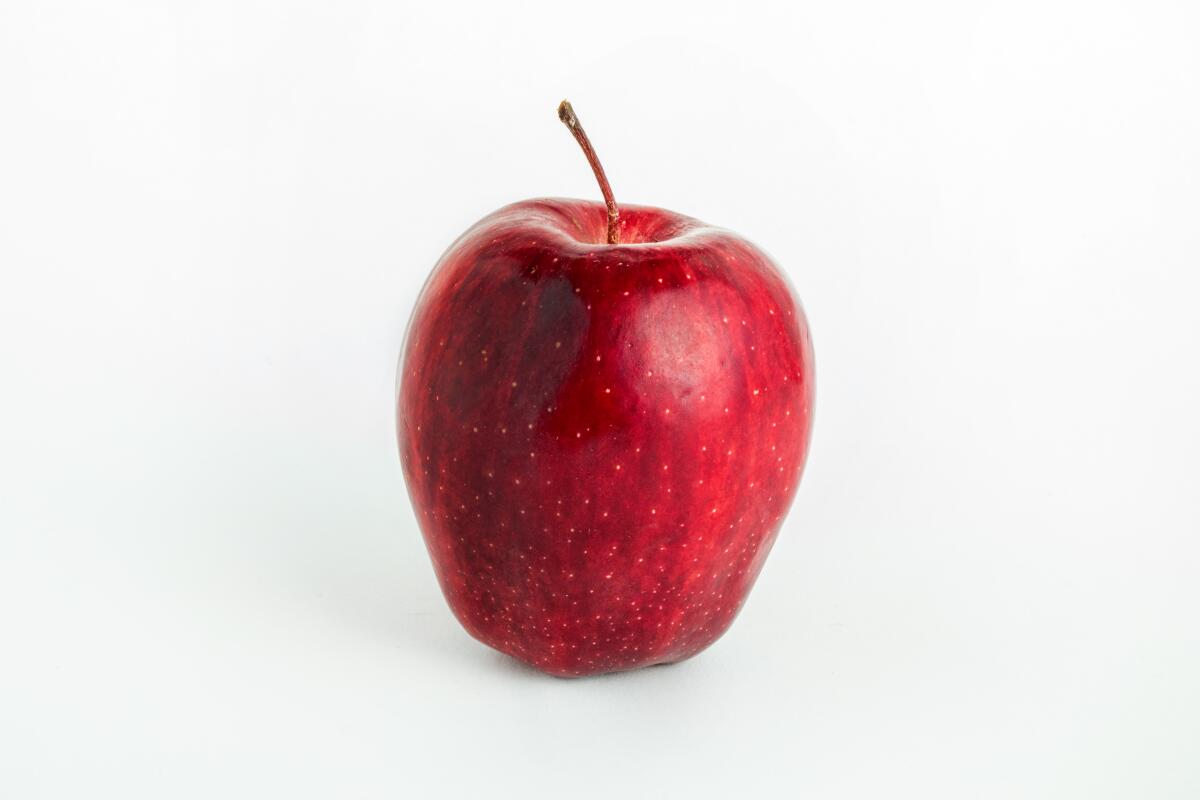
Consumers are rightfully suspicious of businesses claiming that they need to control a market for the public good, but rights owners of branded fruit have an incentive to make sure that their variety is not trashed.
For a long time, the super-crisp texture of the Honeycrisp apple earned it passionate fans and premium prices. The variety was readily available to growers and was given a traditionally attractive name when breeders Jim Luby and David Bedford of the University of Minnesota introduced it in 1990. But Honeycrisp only develops top quality when grown in cool areas, and as the uncontrolled name has gained traction with consumers, profit-minded growers now widely grow it in warmer districts, where the resulting fruit can resemble — and taste like — yellow Styrofoam® softballs.
While Gresham’s law always threatens to ruin the next great apple, without a financial incentive there’d be less reason for growers and sellers to be working toward new, perhaps better fruit varieties.
The good, the bad and the unavoidable
The fundamental argument in favor of branding and the two-name model of fruit marketing — that greater incentives for growers and marketers will result in greater rewards for consumers — may sound like trickle-down fruitonomics.
But there are quite a few branded fruits — Opal® apples, Sumo Citrus® mandarins, IFG® grapes, SweetHeart® pomegranates — that have been game-changers for fruit lovers. Some might have been developed and commercialized under the old marketing models, but others very likely not.
In the short term consumers uneasy with these developments can sidestep privatized fruit by buying heirloom varieties directly from farmers. But as the climate changes and new pests and diseases afflict orchards, small farmers deprived of access to new varieties may not be able to survive.
Consumers can support investment in the public horticultural infrastructure via public breeding programs, farm advisors and germplasm collections. These ensure the future development of varieties available to a wide range of growers, large and small, alongside the thriving private fruit breeding sector.
But to cast aside the future and fate of Big Fruit entirely would be to ignore that packing and marketing are far more technology-driven, expensive and competitive than they used to be. A diversified 50-acre farmer will not be able to survive with old-fashioned marketing practices while competing for Walmart’s business.
And to underscore the urgency of the conundrum, consider that in the last half century fruit imports have increased from 20% (mostly bananas) to more than half of all domestic consumption, and this trend is accelerating.
In so far as food miles often correspond to decreased freshness, this is a major problem for American consumers. Undermining patent protection or restricting marketing models or demonizing larger farmers will not alone change anything — we’ll get swamped with industrial foreign fruit.
In all of this I feel that something has been lost, intangible but nevertheless significant: the simplicity, transparency and aesthetic integrity of classic fruit names.
Asked if he was nostalgic for old-fashioned fruit names like O’Henry and Granny Smith, Luby, the Honeycrisp co-breeder, replied, “Yes, and I’m also nostalgic for the days when the state legislature provided 100% of my budget.”
They’ve given you a number and taken away your name
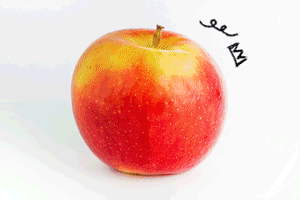
Like the line from the theme song from “Secret Agent” — a TV series that ran from 1964- to 1967 — fruits today, rather than getting a name that celebrates their inherent qualities or origins, are often patented under unmarketable combinations of numbers and names. Sometimes one variety is sold under multiple brand names; sometimes multiple varieties are sold under one brand name, which can make identities confusing, even for produce professionals. Here are the true names behind some of the trademarked brand names they’re sold under:
AtlasBlue® blueberry ↔️ FCM12-045
Baby Cakes® blackberry ↔️ APF-236T
Cosmic Crisp® apple ↔️ WA 38
Cotton Candy® grape ↔️ IFG Seven
Cuties® and Halos® mandarins ↔️ Clemenules, W Murcott Afourer, Tango and a few others
Opal® apple↔️ UEB 3264/2
Pink Lady® apple ↔️ Cripps Pink and four similar varieties
Rave® and First Kiss® apples ↔️ MN55
Sequoia® cherry ↔️ Glenred and several other varieties
Sumo Citrus® mandarin ↔️ Shiranui
Wonderful Seedless® lemon ↔️ Code 3X97, 7ELS1 and Eureka SL
More to Read
Eat your way across L.A.
Get our weekly Tasting Notes newsletter for reviews, news and more.
You may occasionally receive promotional content from the Los Angeles Times.

